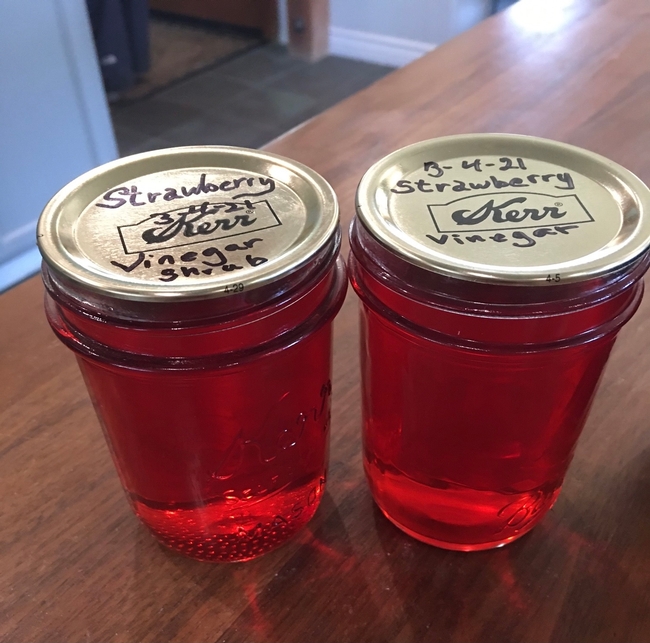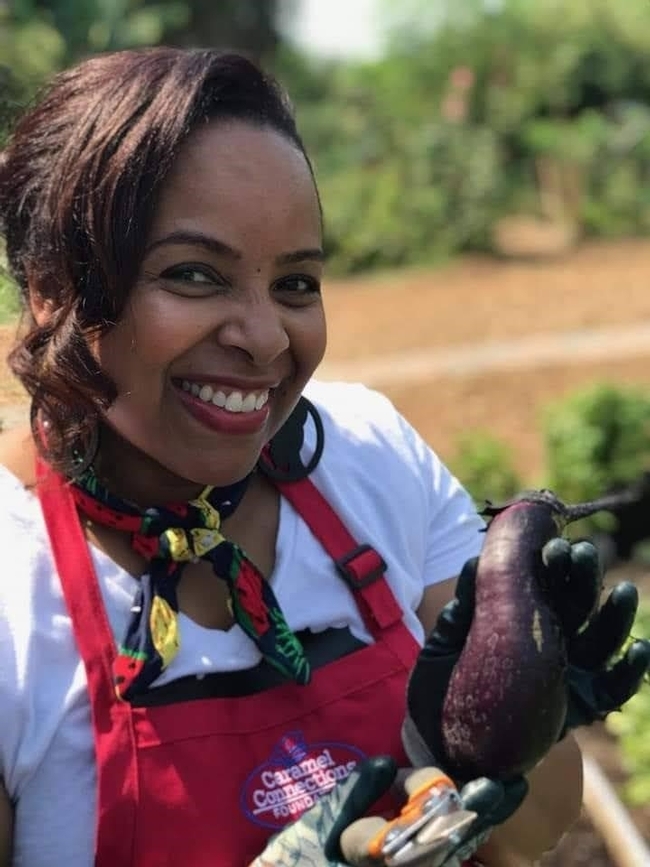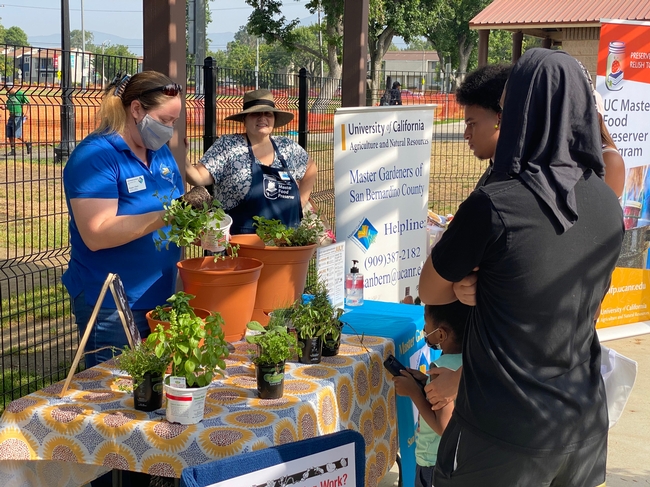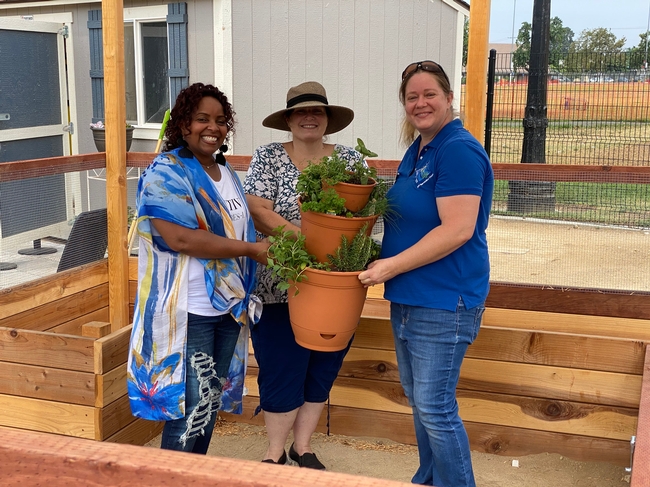
Posts Tagged: UC Master Food Preservers
UC Master Food Preservers turn food scraps into gifts Dec. 1
Free online class offers recipes for using food scraps, answers questions about food preservation
“Putting food in our bellies instead of landfills is good for the planet,” said Sue Mosbacher, University of California Master Food Preserver Program coordinator. In landfills, decaying food releases methane, a greenhouse gas that contributes to climate change.
“We can reduce food waste and save money by creating new foods from food scraps,” Mosbacher said. “Instead of throwing away a lemon peel after squeezing out the juice, use the lemon zest to make lemon curd or citrus salt. They make wonderful homemade gifts for the holidays.”
UC Cooperative Extension Master Food Preservers, a program of UC Agriculture and Natural Resources, provides ideas for using leftovers and advice for safely preserving food.
On Dec. 1, 6:30 to 7:30 p.m., UCCE Master Food Preserver volunteers of Amador and Calaveras counties will host a free online class to show samples of apple honey, citrus salt, strawberry vinaigrette, sugared walnuts and lemon curd. Recipes will be emailed to participants.
“Many of these gifts are inexpensive to make because you're using food scraps – such as lemon rind or apple peel – and a few other ingredients. You can put the citrus salt in jars you've saved,” Mosbacher said. “It is easy to make and there's no special equipment needed.”
After the “show and tell” session, the UCCE Master Food Preserver volunteers will answer participants' questions about freezing, dehydrating and canning foods and food safety.
Because the class is online, anyone can participate, regardless of their location. Register for the one-hour Zoom workshop at https://mfp.ucanr.edu/Events/?calitem=516566.
The UCCE Master Food Preserver Program extends UC research-based information about home food safety and preservation to the public throughout the year. UCCE Master Food Preserver volunteers are located in 19 counties of California, most recently certifying volunteers in Modoc County, where they are offering pressure canner testing.
UCCE Master Food Preserver volunteers host monthly workshops on the first Wednesday of each month, with hosting duties rotating between Sacramento, El Dorado, Amador and Calaveras counties.
For 2022, the UCCE Master Food Preservers of Sacramento County are planning to offer the following workshops via Zoom:
- Jan. 19 – Citrus for Super Bowl
- Feb. 16 – Dehydration for Soups
- March 16 – Soups & Roots
- April 20 – “Night of Fermenting” Cheese/Yogurt/Sauerkraut
- May 18 – Jams & Jellies
- June 15 – “Ready for BBQ Season” Condiments & Beverages
- July 20 - Red, White & Blue
- Aug. 17 – “Tomato Mania” Salsas, Sauces & Peppers
- Sept. 21 – Sausages & Mustards
- Oct. 19 – “Apples, Pears & Persimmons Oh My”
- Nov. 16 – Sides Dishes for your Holiday Dinner
- Dec. 21 – Quick Gifts
To sign up for any of the workshops above, visit https://sacmfp.ucanr.edu.
To find other upcoming UCCE Master Food Preserver Program events, visit https://mfp.ucanr.edu/Events. To find a program in your county, visit https://mfp.ucanr.edu/Contact/Find_a_Program.
Resources for preserving food and more information about the UCCE Master Food Preserver Program are available at https://mfp.ucanr.edu.
UC ANR, local nonprofit grow community health in Inland Empire garden
A volunteer recovering from a drug addiction gives time regularly to help stay sober. An older person uses outdoor spaces to stay active, physically and socially, despite mobility issues. And a mother of four strives to teach her children what carrots look like before they become capsules in plastic bags.
While these San Bernardino County residents enjoy their hours within their community garden, the lessons and inspiration they derive travel much farther – forming the branches and roots of a stronger, healthier community.
Hence the name of this unique place in Ontario, the Seeds of Joy Community Garden.
“The goal is to not just grow in the garden, but to grow the community outside the gates as well,” said UC Master Gardener Elizabeth McSwain, whose nonprofit, Caramel Connections Foundation, has nurtured this project from its beginnings in 2018 as a small plot within the Huerta del Valle Garden.
The programs and classes were so well-received that McSwain and her partners and volunteers opened in April 2021 a much larger, 1-acre space within Anthony Muñoz Hall of Fame Park.
As a self-described “green heart with a brown thumb,” McSwain said the success of the garden would not be possible without the support of UC Agriculture and Natural Resources (ANR) staff and volunteers.
McSwain, a restaurant owner, founded Caramel Connections Foundation in 2016 to offer culinary and healthy eating classes at the local Boys & Girls Club. During her first-ever visit to a community garden to attend a “herbs as medicine” class taught by UC Master Gardener Valerie Dobesh, McSwain had a life-changing conversation at an information table.
Maggie O'Neill, the UC Master Gardener program coordinator for UCCE in San Bernardino County, patiently answered McSwain's many questions about the program, which trains volunteers to spread research-based knowledge on home horticulture, pest management and sustainable landscape practices.
“In regards to planting the seed in my heart, I can never say enough about Maggie,” McSwain said, “because Maggie's passion and her knowledge about gardening made me feel like…even though I didn't have the skill set, she made me feel as if I would be a good candidate for the Master Gardener program.”
McSwain graduated from the program in March 2021, equipped with the expertise to better support the volunteers and participants in an ever-blossoming variety of programs that serve a broad swath of the community.
“One of the key founding principles of this garden from the very beginning has been inclusivity and making sure that all community members feel welcome, celebrating many cultures, ethnicities and religions,” O'Neill said. “Elizabeth has made sure that the partners and organizations that are supporting this garden are equally diverse and inclusive so that the community members are able to see themselves represented in the people who are helping to bring this garden together.”
Seeds of Joy now features a Zen garden with succulents to raise drought awareness, a Read in Color Little Free Library emphasizing diverse cultural connections, a composting/vermicomposting bin system to highlight waste diversion (with a small orchard), a story time area for children, an outdoor classroom, a space for yoga classes, and an outdoor community kitchen that helps produce meals for facilities serving individuals and families experiencing homelessness.
“With food insecurity being such a major problem for San Bernardino County in general, even prior to COVID, the current epidemic of poor nutrition in our children is weakening the strength of our community,” McSwain explained. “We hope to play a part in helping to fix that in some way – healthy food and fitness are powerful essentials that are often overlooked.”
Residents of low-income housing units across the street will have priority for reserving plots in the heart of the garden – approximately 30 raised beds for growing fresh, organic produce. Although completion of those beds has been delayed due to COVID impacts, applications have already been coming in.
“Ultimately our goal is to teach Inland Empire families what's involved in maintaining an edible garden,” McSwain said. “We provide them with the basic tools.”
In addition to UC Master Gardener-led classes, other UC ANR programs are contributing to this educational hub within a historically underserved neighborhood. The Master Food Preserver Program volunteers will be offering workshops on how to safely preserve the community garden's harvests, while EFNEP (Expanded Food and Nutrition Program) educators will teach about eating nutritious, delicious food in a budget-conscious way.
“Our programs are a great complement to the garden and to each other because we teach people how to grow their own food, then teach them how to preserve it and how to make lifestyles changes for healthier, happier families,” O'Neill said. “With all of these classes offered free to the community through the UCCE, we are able to add incredible value to an already great project.”
Already, O'Neill has been showing community members how to “companion plant” – maximizing the limited space residents have to work with, by placing ecologically compatible plants next to each other so that they can mutually flourish.
Companion gardening is a fitting analogy for the power of collaboration – with local officials, community and corporate partners, and organizations such as UC ANR – in growing spaces and resources for the benefit of the entire community.
“Partnering with the Master Gardener program and the Master Food Preserver Program and EFNEP is the perfect partnership in that we're all trying to do the same thing,” McSwain said. “We're trying to help people make better choices and to give them the tools so that they can live better lives, and not necessarily have to rely on spending $500 at the grocery store to get organic products, and making a choice between paying your light bills or buying food.”
McSwain welcomes all community members to participate, engage, and visit the Seeds of Joy garden, located at 1240 W. Fourth St. in Ontario.
“I don't want it to be a secret garden,” she said. “We want the community to know that it's there for them, that it's there to enhance their life – to reduce the disparities in our community and to be able to just spark a love of gardening and bring joy.”
In addition to support from UC ANR programs, Seeds of Joy is made possible by the City of Ontario (Mayor Paul Leon, City Council, and former City Manager Al Boling), American Beverage Association, Beola's Southern Cuisine, CalRecycle, Huerta del Valle Garden, Inland Empire Health Plan (IEHP), Inland Empire Resource Conservation District, Kellogg Garden Products, Mercy House, San Bernardino County, SLJ Pro Audio Services – among a host of other community partners.
It's time to get serious about food waste
Here's my take on food waste. It goes back in part to lessons I've learned from studying World War I, when the American government set food conservation goals (along with goals for local food production via Liberty - later Victory - Gardens). I'm a big proponent of both reducing food waste and producing more food in communities via school, home and community gardens. Big point: the World War I poster included in this post has advice we'd be well served to heed today.
"Food waste is both an ethical and environmental issue. It should concern us that we waste nearly 40 percent of the food we produce and purchase in this food-abundant nation.
For an interesting comparative statistic, consider this: our nation produced nearly 40 percent of the fruits and vegetables we consumed on the American home front during World War II in school, home, community and workplace gardens."
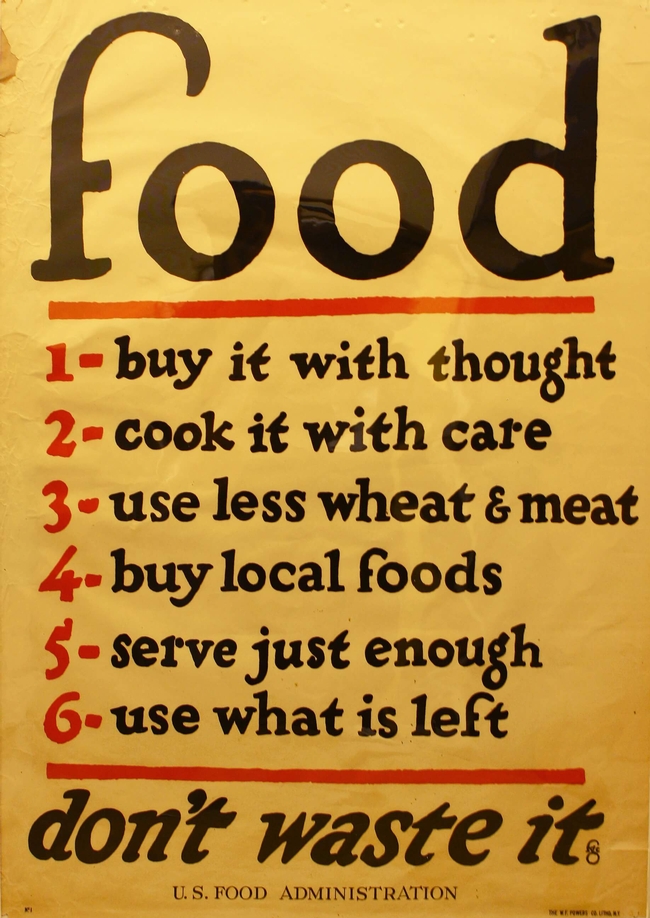
It's an iconic poster from World War 1. Food...don't waste it. The image is regularly shared on Twitter and Facebook.
The original was produced in 1919 by the United States Food Administration, under the direction of the newly appointed food "czar" - Herbert Hoover.
The poster was reissued during World War II. It's been revised in recent years, by individuals and organizations interested in encouraging an ethos incorporating local foods and sustainability.
While I'm the UC Food Observer, I also dabble in the history of wartime poster art. I'm often asked if this is a contemporary mock-up made to look and feel vintage.
It's not a mock-up. It's the real deal, produced 95 years ago, with messages we should embrace today.
History of poster art
The First World War marked the first large-scale use of propaganda posters by governments. Posters, with easy-to-understand slogans and compelling images, made powerful propaganda tools. The government needed to shape public opinion, recruit soldiers, raise funds and conserve resources and mobilize citizens to important home front activities ... including gardening, food conservation and food preservation. In an era before television and widespread radio and movies, posters were a form of mass media. And they appeared in windows and were posted on walls everywhere, in as many languages as were spoken in this nation of immigrants.
If you want to dig a little deeper, the poster art of WWI was influenced by the La Belle Epoque - the beautiful era - named in retrospect, after the full horror of WWI had been revealed. The Art Nouveau movement in France and the rise of modern advertising were also important in shaping how posters were used during wartime. Technical improvements in printing, including a process called chromolithography, facilitated mass production of posters.
The original poster: Yes: 'buy local foods' is rule 4
The original poster has six rules that we'd be well served to follow today. The fourth rule - buy local foods - is somewhat of a surprise to people today, because the notion of buying local seems somewhat modern. But in WWI, the U.S. government encouraged the local production and consumption of food, in part, to free trains to more effectively ship troops and war materiel.
Tackling food waste through preservation: today's Master Food Preserver Program
UC Agriculture and Natural Resources (UC ANR) hosts a UC Master Food Preserver Program. The program teaches best practices on food safety and preservation to volunteers. The extensive training program prepares the volunteers to work in their community educating others on the safe practices of food preservation, including pickling, drying, freezing, canning and fruit preserves.
Thinking about gardening? Do we have resources for you!
UC ANR also has the UC Master Gardener Program, which fields more than 5,000 volunteers in communities across the state. The Master Gardener Program is a national program, housed at the land grant institution in each state, but it's also connected to the USDA. Free gardening resources are available here. Advice to grow by...just ask.
This is an excerpt of an article from a post on the UC Food Observer blog, used with permission.

